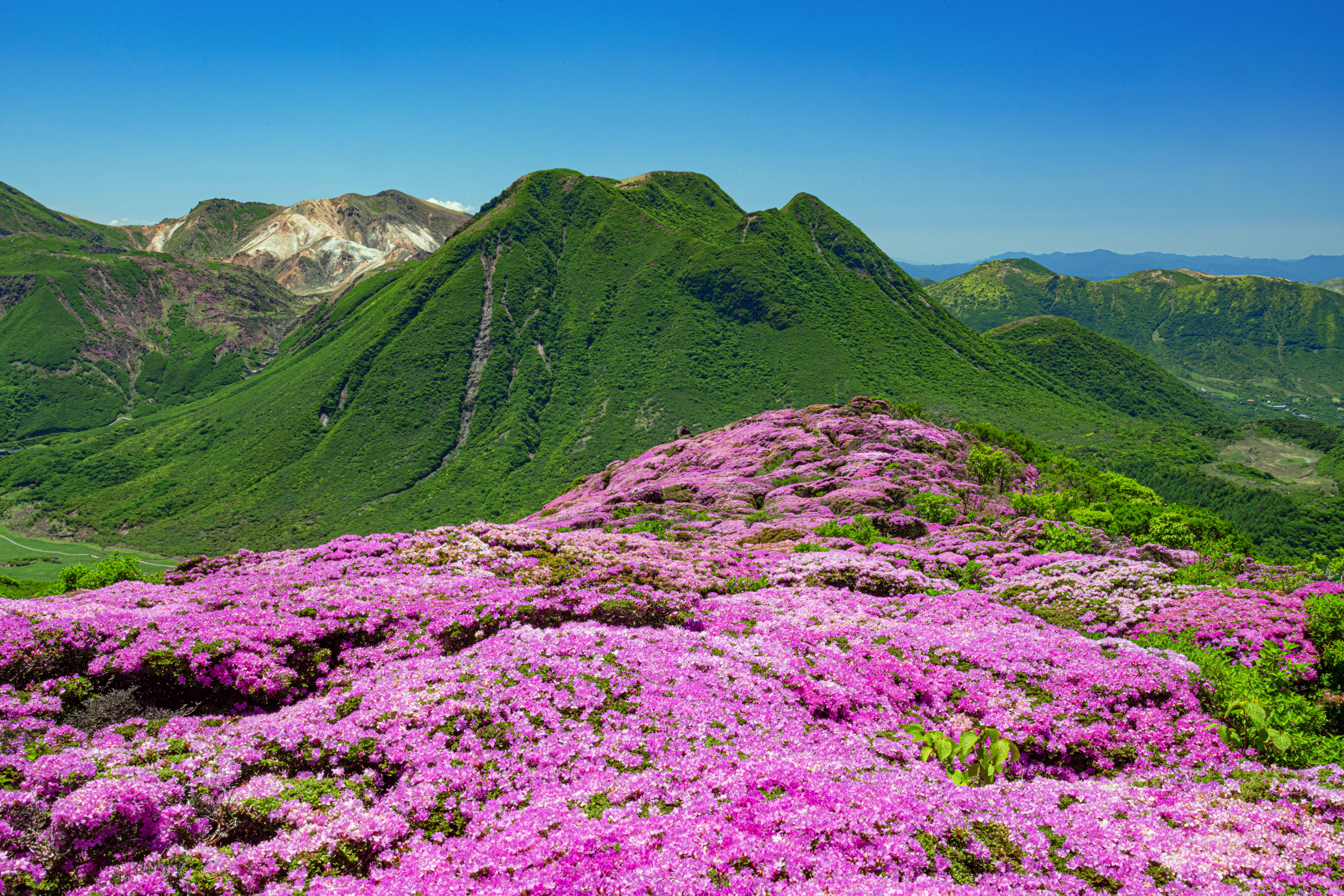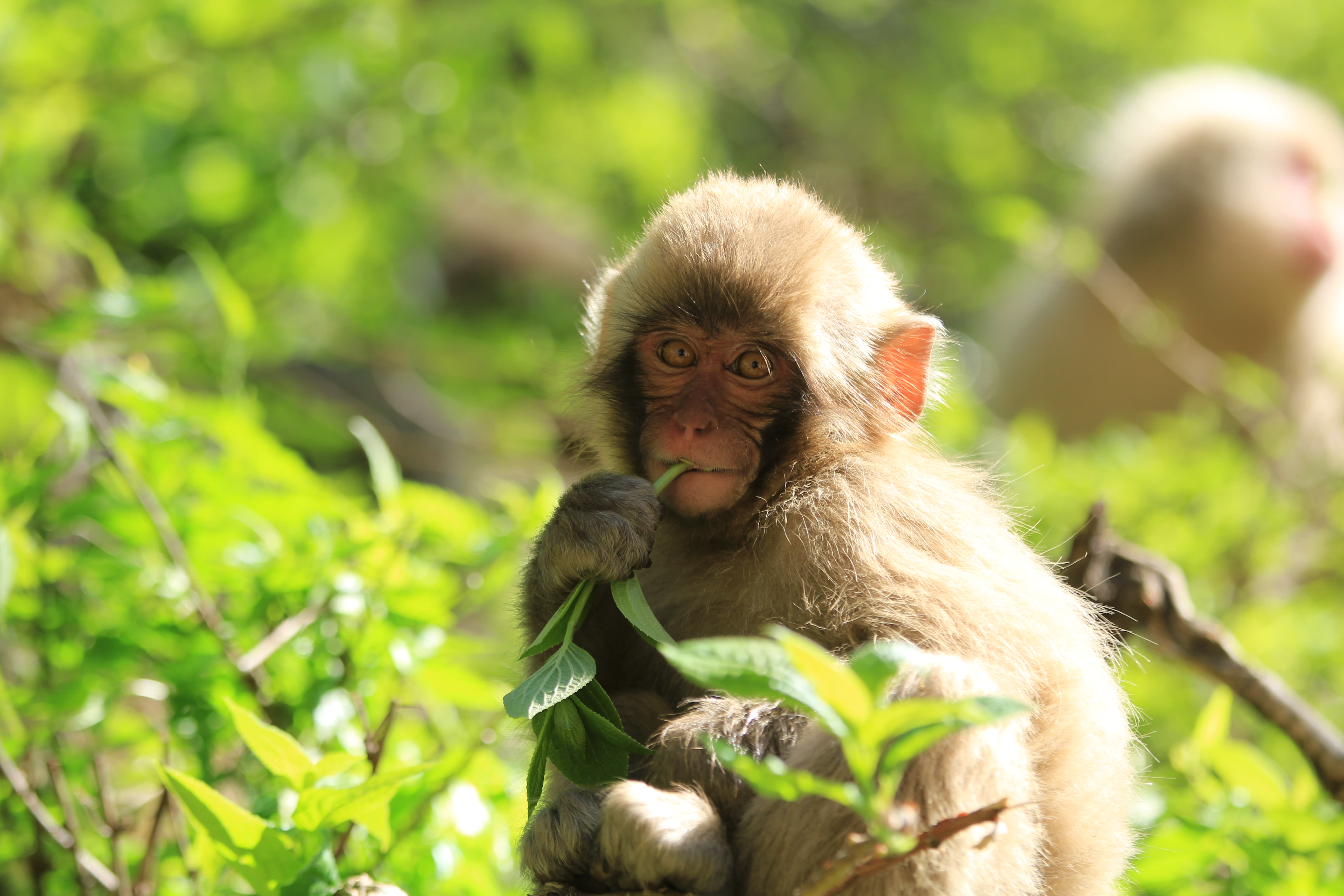
Explore the wilds of Japan through volunteer and ecotour experiences
Assist in researching a Special Natural Monument
The rivers of Tottori Prefecture, in Daisen-Oki National Park, are the habitat for one of the country’s unique creatures: the Japanese giant salamander (Andrias japonicus). These extraordinary amphibians are a Special Natural Monument, and considered living fossils—creatures that have remained relatively unchanged over millions of years. Japanese giant salamanders are the largest amphibian in the country (and one of the largest in the world), able to grow up to 1.5 meters long, and they can live up to 100 years.
For the rare opportunity to get up close and personal with these amazing amphibians, you can join one of the world’s leading giant salamander experts, Dr. Sumio Okada, on a research tour of the Hino River, just outside of the Daisen-Oki National Park boundary. Before sunset, walk alongside the water to explore the environment inhabited by the nocturnal giant salamanders, then heading to the classroom for a special lecture and Q&A session. At night, you will return to the river to assist in a survey to measure and weigh the salamanders. This data is essential to the conservation efforts of the Japanese giant salamander, all of which are carried out under strict ethical guidelines.

Japanese giant salamander
Help keep Kyushu’s countryside covered in beautiful azaleas
The beauty of the delicate flowers known as Miyama Kirishima (or Unzen azaleas) that cover the high mountains of Kyushu has inspired poetry and songs. These alpine plants vary in color, from light pink to shades of red and purple.They can be widely seen on Mount Kirishima, Mount Aso, and Mount Unzen, where they historically thrived in the mineral-rich, volcanic soil.
In Oku-Unzen, part of Unzen-Amakusa National Park, Miyama Kirishima flowers need a helping hand. In days past, cattle and horses grazed on the undergrowth of the area, creating ideal conditions for the azaleas to flourish. As grazing has become less common, human intervention has become more and more necessary to ensure the flower’s continued survival.
You can assist in these efforts by cutting the undergrowth of Miyama Kirishima. Enjoy a hearty lunch after a day of al-fresco gardening, and relax afterward with a zazen meditation experience. As a reward for your efforts, you will be sent a photo of the flowers covering the hillside in full bloom.

Vibrant, purple Unzen azaleas
Protecting Japan’s precious sea turtles
There are seven species of sea turtles worldwide, and among them, three species come ashore in Japan to lay their eggs—loggerhead, green, and hawksbill sea turtles. Around the globe, sea turtles are threatened by killing and poaching, marine pollution, deterioration of nesting sites, and other ecological issues.
Nippo Kaigan Quasi-National Park is home to an important sea turtle nesting ground, a 270-kilometer-long stretch of coast in Oita Prefecture that is within Nippo Kaigan Quasi-National Park. There, the Carapace Sea Turtle Rehabilitation Center—a facility dedicated to the conservation, rehabilitation, and research of sea turtles—offers programs where visitors can observe sea turtles up close, responsibly, while they are rehabilitating in marine cages. There are also educational lectures for those who wish to learn more about sea turtle conservation.

Sea turtles visit Japan to nest
Nagatahama Beach, on the island of Yakushima in Yakushima National Park, are also an important nesting ground (mainly for loggerhead turtles). To help preserve the beach’s integrity, visitors are asked to refrain from entering the beach area at night from May to September. Those who wish to view the turtles at this essential point in their life-cycle can do so by registering for an observation tour, run by the Sea Turtle Protection and Utilization Subcommittee, held from May through July. The observation tour begins with an informative orientation about sea turtles, then once spawning begins, you will go out to the beach to observe the sea turtles up close. The observation tour (and the nearby hamlet of Nagata) abides by a code of conduct to ensure the safety of the turtles, and firmly requests all participants do so as well.
Swim with the dolphins
Mikurajima is a sparsely populated island of the Izu Archipelago in Fuji-Hakone-Izu National Park. The island’s 300 or so residents have a close relationship with aquatic creatures that also call the area home—dolphins. To help protect these majestic marine mammals and preserve their habitat, they offer tours where visitors can enjoy dolphin watching, or swimming alongside them.
The tours prioritize the dolphins and are conducted under the supervision of guides who have received special certification from the Tokyo Metropolitan Government. The season, hours, and number of tours conducted are all strictly regulated for the safety of the dolphins. In addition to learning more about these highly intelligent animals, you can enjoy a stroll through the island’s pristine forests. A portion of the proceeds for every tour goes toward local research, which aims to promote harmonious existence between dolphins and humans.
Explore a protected habitat of the Ussuri brown bear

Ussuri brown bear foraging on the shore
The Ussuri brown bear (Ursus arctos lasiotus)—also known as the Ezo brown bear—is the largest land mammal in Japan, capable of reaching sizes of up to 500 kilograms. These impressive creatures can be found in various regions throughout Japan’s northern island, Hokkaido, including the wilds of Shiretoko National Park and Daisetsuzan National Park. But over the years the Ussuri brown bear has suffered loss of habitat through human activities such as forestry and infrastructure development, which makes the preservation of areas where they can thrive essential to their continued survival. Daisetsuzan National Park's Kogen Onsen is one important habitat for the Ussuri brown bear, where visitors have an opportunity to see them in the wild on a trek through the area.
The trailhead begins at the Brown Bear Information Center, an educational facility where visitors can learn about the ecology and habits of the Ussuri brown bear. The chance to see the bears in their natural habitat is a rare treat, but safety is paramount, so anyone who wants to enter the trail must first listen to a comprehensive lecture on bear safety. While the lectures are conducted in Japanese, they have multilingual materials for international visitors. A full circuit of the trail takes about four to five hours, during which hikers will pass by numerous picturesque ponds, full of lush greenery, marshland plants, and seasonal flowers. To help preserve the environment and reduce risk of attracting bears, there are three designated areas where hikers are allowed to eat. For safety, visitors must return to the Brown Bear Information Center by 3:00 p.m., so an early start is recommended. Rest and relax after your trek with a soak in one of the area’s natural hot springs.

Japan is home to many diverse species
Preserving parks for the future
These are just a few of the unique opportunities offered in Japan’s national parks. Programs such as these are a great way to form a deeper connection to the country’s natural beauty, learn more about Japan’s precious wildlife, and help preserve these resources for future generations. Visit our stories and guides page for even more inspiration from the National Parks of Japan.
























